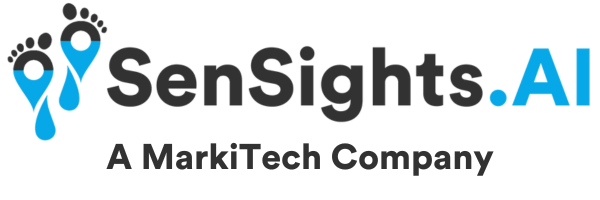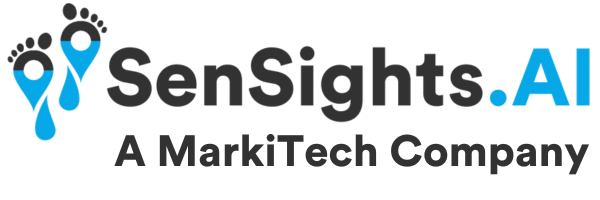Reaching Older Adults During the Pandemic
COVID-19 and its variants continue to put immense pressure on our healthcare system and older adults’ health at risk. Facing the highest infection risks, patients above the age of 80 have an estimated mortality rate of 13.4% compared to patients above 50 who have a 1.25% rate (Begley, 2020). This is due not only to the fact that older adults have weaker immune systems, but also due to chronic conditions such as early cognitive decline that make them more susceptible to falls, wandering and random exposure.
Even before the pandemic, many older adults opted for independent living (‘aging in place’) with regular visits from healthcare providers and skilled caregivers. Aging in place, especially in the midst of a pandemic, presents its own unique set of care challenges such as a lack of constant oversight and possible lags in medical intervention.
Therefore, it is crucial to shape the new ‘virtual-first’ approach in a way that helps physicians and caregivers track and manage the health of older adults and enhance the continuum of care. Remote Patient Monitoring (RPM) is one such type of digital health technology that helps manage senior care through multiple points of contact with healthcare providers. RPM may utilize vitals monitoring, daily notes, GPS tracking and real-time alerts to mitigate negative health events. It also ensures people receive proper virtual primary care without travelling to clinics and hospitals and, therefore, avoid exposure to a potentially fatal virus.
Choosing the Right RPM Solution for Your Needs
Choosing the right RPM platform is a complex undertaking as there are a number of aspects to take into consideration. These may range from connectivity to compatibility (with FDA approved or non-FDA devices) and the ability to customize these platforms to an individual patient’s needs.
LocateMotion has developed Safe@Home, a dedicated RPM solution on the SenSights.ai health intelligence platform. It is a simple but powerful Hospital at Home (HaH) solution that helps healthcare providers and caregivers track and manage patient health and empower aging in place.
Our RPM solution offers 24/7 patient statistics monitoring, real-time emergency alerts and important insights that patients can share with their care coordinators. Unlike most RPM solutions, our product can be integrated with most APIs. SenSights.ai provides physicians with a solution that gathers patients’ vitals, daily notes, medicine effects, feelings and behaviors to create ‘digital twins’ and suggests interventions based on the resulting risk profiles. ThoughtWire defines digital twins as virtual replica of a patient created using real-time health data collected from many sources (e.g. IoT sensors, medical devices, wearables, etc.).
We augmented this solution with features such as geofencing, GPS tracking, fall detection and infection risk assessment and control. SenSights.ai helps the track and monitor the progression of chronic conditions including, but not limited to early cognitive decline (e.g. Alzheimer’s Disease, Dementia). Our user-friendly dashboard makes it easier for caregivers and physicians to utilize this one-stop solution to drive positive health outcomes.
What makes our platform truly unique is its device agnosticism. SenSights.ai is compatible with multiple device categories from smartphones to wearable devices, IoT sensors and FDA approved medical devices. The latter includes bluetooth-enabled glucometers, blood pressure cuffs, thermometers and blood oximeters.
We provide FDA approved, or non FDA approved medical devices, pre-loaded with SenSights.ai as part of our condition-specific packages. We also offer Safe@Home on a Bring Your Own Device or device-less RPM basis wherein clients simply download the SenSights.ai app on their smartphone and smartwatches.
SenSights.ai is, currently, able to collect patient statistics such as heart rate, heart rate variability, temperature, blood pressure, blood glucose levels. Our platform also records geolocation, sleep cycles, walking speed and ambient temperature.
Choosing the Right RPM Devices or…Go Device Less?
An important consideration for physicians is choosing the right devices to collect and transmit accurate and actionable health data. Here, we discuss some tips to employ when choosing devices for home-based senior care patients.
Pulse Oximeter
The pulse oximeter is an FDA-approved device that monitors blood oxygen saturation. According to a PMC study, silent hypoxia is one symptom scientists are using to detect the presence of COVID-19 and its variants. The key is to identify the initial drop in blood oxygen saturation, which can help healthcare providers treat patients proactively, before they contract an infection such as the coronavirus.
Safe@Home utilizes this medical device to track and monitor saturation levels. Moreover, it creates insight reports, which allow clinicians to set condition-specific benchmarks to help provide personalized care.
Blood Glucometer
Diabetes Canada research indicates that people with diabetes or poor glycemic control are at an increased risk of contracting COVID-19, amongst other infections. More and more physicians are encouraging patients to monitor glucose levels remotely to reduce the need for hospital and primary care visits in the midst of a pandemic.
Our solution allows older adults to self track and monitor blood sugar levels from the comfort of their own homes via an FDA approved glucometer. It automatically transfers important insights and daily reports to healthcare professionals for the purpose of diagnosis and treatment.
Blood Pressure Monitor
Research shows that 25-50% of COVID-19 patients from China and the US suffered from high blood pressure as a pre-existing condition. This study also suggests that individuals with hypertension are 2x more likely to contract an infection.
Safe@Home provides clients with a blood pressure cuff that can be used by patients and caregivers to monitor patients’ blood pressure proactively. SenSights.ai then creates risk profiles and provides smart alerts to allow healthcare providers to monitor and intervene, as necessary.
Device-less RPM: Smartphones & Wearables
Among the most significant challenges faced in long term care is healthcare accessibility. Traditionally, an RPM solution required access to bluetooth-enabled devices which, although unparalleled in data accuracy, can be costly and technologically challenging investments for payers and older adults, respectively. The latter, is especially true for high risk populations such as patients with mild dementia or other forms of early cognitive decline.
Regrettably, there are over “5.5 million Americans living with Alzheimer’s and other dementia, and the number is continually growing” (Health Recovery Solutions). Given the number of older adults facing cognitive health concerns, digital health solutions must account for those who require medication reminders, GPS tracking and remote emergency support in case of a wandering or fall episode. Although traditional devices are limited in this regard, the emergence and saturation of smartphones and wearable devices has created a unique opportunity for medical device-less telehealth solutions.
Pew research finds that “the vast majority – 96% – now own a cellphone of some kind [and] the share of Americans that own smartphones is now 81%. This number continues to grow exponentially across all age demographics. Smartphones or smartwatches are promising alternatives to medical devices not only due to relative financial accessibility, but also their user-friendly interface and trouble-free navigation. It is a piece of hardware that most adults carry around everywhere. The latest of these devices offer GPS, step count, sleep tracking and emergency response capabilities.
Safe@Home by SenSights.ai simply extends the capabilities of these non-medical devices to generate and share daily insights, smart alerts and behaviour reports. Surely, the latter proves essential for patients with dementia and cognitive decline who are prone to “unfavorable patient behaviors or reactions, such as anxiety, confusion and agitation” (Health Recovery Solutions). Moreover, our device agnostic nature means that our app can be integrated with any current or future versions of iPhones, Apple Watches, Android devices, Fitbit Fitness Trackers and beyond. Payers, patients and physicians alike are free to choose the devices best suited to their budget, technological proficiency level and patient needs.
Navigating the ‘New Normal’ with RPM.
All in all, the current and post-COVID-19 world continues to emerge with new rules to help navigate the new normal. Public health initiatives will continue to require people to follow the rules of mask-wearing, social distancing and, wherever possible, conduct business remotely. This has led to innovations in and the widespread adoption of telehealth, telemedicine and digital health technologies – for example, RPM platforms and health intelligence solutions designed with long term care in mind.
The ideal telehealth solution provides real-time updates to caregivers and physicians so they can take the necessary steps to ensure they are providing patient-centric care. Our dedicated elder care solution Safe@Home, provides a uniquely customizable RPM platform coupled with GPS tracking, geofencing, and wandering and fall detection to create a digital twin. Our platform helps provide whole patient care, build a positive health experience and provide better health outcomes. Overall, RPM solutions and digital health innovations promise better quality and personalized care and reduce physician and skilled nursing caregiver burnout.
Book a demo today to learn more about LocateMotion (SenSights.ai) and how our proactive monitoring solutions can work for you at Sensights.ai/demo
Follow us on LinkedIn at @LocateMotion for more updates.


